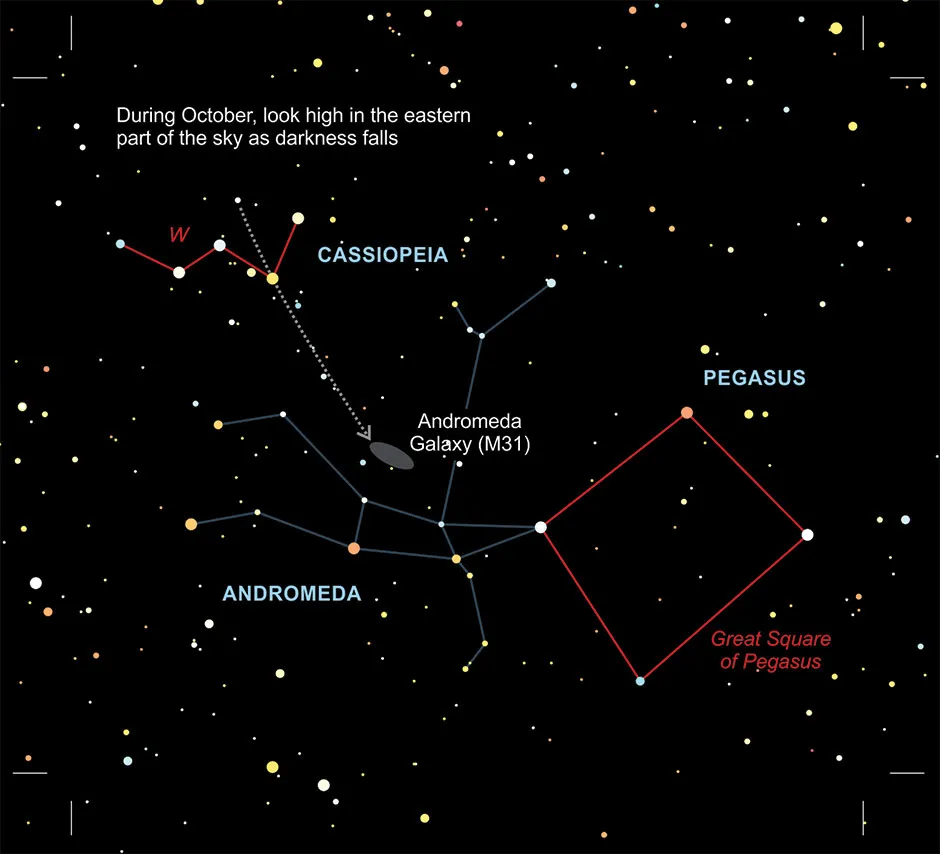At 2.5 million light-years from Earth, the Andromeda Galaxy is the most distant object visible with the naked eye. It’s the closest major galaxy to the Milky Way, and can only be seen if you have a really dark sky. However, the good news is that it’s visible all year round from the UK.
To find Andromeda, it’s easiest to start with the constellation Cassiopeia. For northern hemisphere stargazers, Cassiopeia is what’s known as a ‘circumpolar’ constellation, which means that it’s always visible above the horizon. Look towards the northeast and you’ll recognise Cassiopeia by the distinctive ‘W’ star pattern (or ‘asterism’) that its five brightest stars make.

Once you’ve found Cassiopeia, you can use the right-hand half of the ‘W’ as an arrow pointing towards Andromeda. The distance between Cassiopeia and Andromeda is about three times the height of the W. With the naked eye, Andromeda will be extremely faint. But if you have a pair of binoculars, look through them and you’ll see what looks like a cloud. That’s an entire galaxy.
While you’re in this part of the sky, you can also use the nearby ‘Great Square of Pegasus’ asterism to test the light population in your area. The Great Square is visible in the UK between August and December, and during October it can be seen all night. It has four bright stars arranged in an almost perfect square shape, and you’ll find it below and to the right of Cassiopeia’s ‘W’.
Once you find the Great Square, let your eyes adjust and then count the number of stars you can see inside it. If you see no stars, it means the light pollution in your area is poor. The average number of stars is 4, 9 stars is good and 21 is excellent. The most you’ll ever see with the naked eye, in the darkest skies, is 35.
Read more:
- A beginner’s guide to stargazing, no telescope required
- How do I find the North Star?
- 9 stargazing tips to get you watching the stars from home
Looking for stargazing tips? Checkout our complete astronomy for beginners UK guide.
